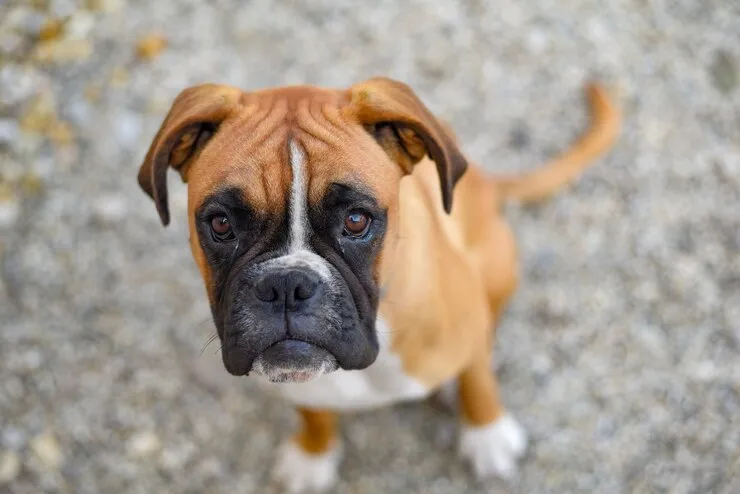The Anatolian Shepherd Dog is a strain that commands respect and admiration and is known for its emotional size, unwavering fidelity, and remarkable guarding instincts. Originating from the rugged terrain of Anatolia (ultramodern-day Turkey), this majestic doggy has a history that spans thousands of times. It’s a strain that has not only survived but thrived as a guardian, protection, and companion. In this blog, we claw into the fascinating world of the Anatolian Shepherd Dog, exploring its history, characteristics, disposition, and felicity as a family pet.
A Regard into History
The Anatolian Shepherd Dog traces its lineage back over 6,000 times to the plains of Anatolia, where it was bred to guard beasts against bloodsuckers similar to wolves, bears, and jackals. These tykes were vital to the vagrant lines of the region, who reckoned on them to cover their precious herds. Their imposing elevation, keen senses, and natural guarding instincts made them necessary.
The strain’s adaptability and rigidity allowed it to thrive in harsh climates, from scorching summers to indurating layoffs. Over centuries, these tykes have remained fairly unchanged, a testament to their effectiveness in their traditional places.
Physical Characteristics of Anatolian Shepherd Dog
The Anatolian Shepherd Dog is a large and important strain, frequently described as an assessing yet noble presence. Then are some of its defining physical traits
Size
Males generally stand between 29 to 32 elevation at the shoulder, while ladies range from 27 to 31 elevation. Their weight can vary from 80 to 150 pounds, depending on gender and make.
Coat
They’ve got a thick double fleece that provides sequestration and protection. The fleece can be short or slightly longer and comes in colorful colors, including fawn, brindle, white, and pinto, frequently with a black mask.
Head
The head is broad and strong, with a slightly rounded cranium and an important jaw.
Eyes and Ears
The eyes are almond-shaped and suggestive, generally dark brown. The cognizance is medium-sized, triangular, and hangs near the cheeks.
Temperament and Behavior of Anatolian Shepherd Dog
The Anatolian Shepherd Dog is famed for its intelligence, independence, and strong defensive instincts. These traits are embedded in its history as a beast guardian. Then what you can anticipate from this strain.
Loyalty
Once clicked, an Anatolian Shepherd is fiercely pious to its family, frequently forming a deep connection with its mortal companions.
Protectiveness
This strain is naturally cautious of nonnatives and takes its part as protection seriously. Beforehand socialization is pivotal to ensure balanced geste.
Independence
Unlike numerous other types, Anatolian Goatherds are independent thinkers. This can make training a challenge but also highlights their intelligence.
Calm address
While they are alert and watchful, Anatolian Goatherds are generally calm and composed, especially when not provoked.
Training and Socialization of Anatolian Shepherd Dog
Training an Anatolian Shepherd Dog requires tolerance, thickness, and an establishment but gentle approach. Then are some tips for raising a well-conducted Anatolian Shepherd
Start Early
Begin socialization and training from a young age. Expose the canine to colorful surroundings, people, and other creatures to develop a balanced disposition.
Positive Attitude
Use prices-grounded training styles. These tykes respond well to praise and treats but may repel harsh or corrective measures.
Consistency is Key
Thickness is crucial Establish clear rules and boundaries. The canine’s independent nature means it’ll test limits if given the chance.
Matriculate Professional Help
For first-time possessors or those strange with the strain, working with a professional coach can be salutary.
Living with an Anatolian Shepherd Dog
Retaining an Anatolian Shepherd Dog is a satisfying experience, but it’s not for everyone. Their size, energy situations, and guarding instincts mean they bear a specific type of proprietor and terrain.
Space Conditions
These tykes are best suited for homes with large yards or pastoral settings where they can bat freely. Apartment living is generally not ideal.
Exercise Needs
Despite their size, they don’t bear inordinate exercise. A couple of diurnal walks and space to stretch their legs serve.
Interaction with Children and Pets
Anatolian Goatherds are gentle with children and can attend with other faves if raised together. Still, their guarding instincts mean supervision is necessary.
Diet and Health
Provide a balanced diet applicable for large types. Regular warhorse check-ups are essential, as they can be prone to conditions like hipsterism dysplasia, and bloat.
The part of the Anatolian Shepherd Today
In ultramodern times, the Anatolian Shepherd Dog continues to exceed in its traditional part as a beast guardian. Growers and drovers worldwide calculate on these tykes to cover their herds from bloodsuckers. In addition, they’ve gained fashionability as family companions for those who appreciate their unique rates.
Associations similar to the Cheetah Conservation Fund in Namibia have indeed employed Anatolian Shepherd Dogs to cover beasts from cheetahs, reducing mortal-wildlife conflict and helping to conserve exposed species.
Is the Anatolian Shepherd Dog Right for You?
Choosing the Anatolian Shepherd Dog as a pet requires careful consideration. This strain is ideal for individuals or families who
i. Have experience with large, independent tykes.
ii. Live in pastoral or suburban areas with ample space.
iii. Are committed to training and socialization.
iv. Appreciate the strain’s guarding instincts and are prepared to manage them responsibly.
Final Thoughts
The Anatolian Shepherd Dog is a strain like no other. Its combination of fidelity, intelligence, and defensive instincts makes it a remarkable guardian and companion. While not suited for every ménage, those who can meet its requirements will find a devoted and reliable friend in this noble strain.
Whether guarding flocks in the fields or keeping watch over a family home, the Anatolian Shepherd Dog remains a symbol of strength, adaptability, and unwavering fidelity. It’s a living testament to the enduring bond between humans and their canine companions, forged through glories of participated purpose and collective respect.













